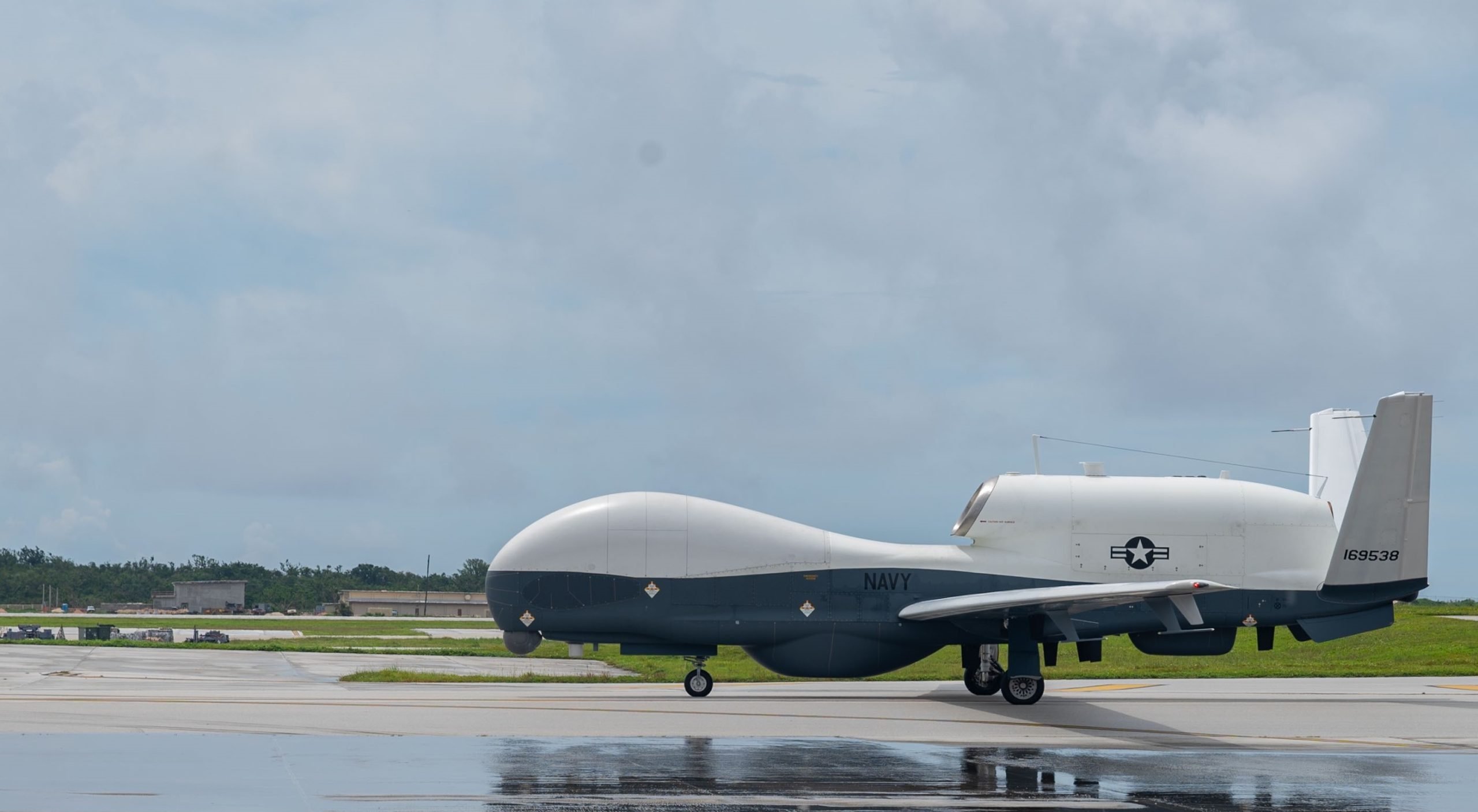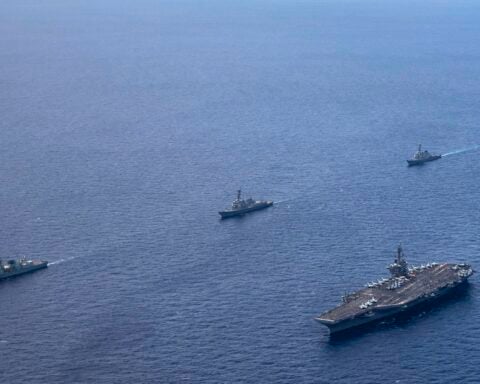
The second of two U.S. Navy MQ-4C Triton unmanned aerial vehicles temporarily deployed to Okinawa arrived on Sunday, reported Japanese newspaper Okinawa Times, with the two UAVs expected to soon commence intelligence, surveillance and reconnaissance (ISR) missions around Japan’s southwest islands. Meanwhile, People’s Liberation Army Navy (PLAN) ships transited through the waters of Japan’ southwest islands on Sunday, while China’s Ministry of National Defense on Tuesday pushed back against the Netherland’s claim that on Friday, Chinese military aircraft and a helicopter approached closely to a Royal Netherlands Navy frigate in the East China Sea.
The two Triton UAVs, the first having arrived on May 20, will be operating from Kadena Air Base until October, according to a Japan Ministry of Defense public explainer. The document stated that in light of the severe security environment around Japan, it was important to strengthen the ISR capabilities of the U.S.-Japan alliance. The deployment will provide greater access to areas where ISR is needed, including the southwestern region of Japan, and increase the time spent conducting ISR activities in and around the region.
The document also stated that this is the third time Tritons have been deployed to Japan, with the first deployment in 2021 from May to October at Misawa Air Base, and the second in 2022 from July to October at Marine Corps Air Station Iwakuni. The two Tritons are not the only U.S. unmanned ISR UAVs at Kadena; eight U.S. Air Force MQ-9 Reaper have been stationed there since October last year on an indefinite period of deployment. “Kadena’s strategic position makes it an invaluable location to stage ISR operations, enabling access to numerous potential flashpoints across the Indo-Pacific region,” stated a USAF release on the Reapers’ arrival at Kadena.
Japan has become increasingly concerned about the security of its islands, particularly in the southwest region. The bulk of Japan’s islands are separated by a considerable distance of water and airspace that fall outside the 12 nautical mile territorial limit. Both Russia and China have conducted joint naval drills and bomber flights close to Japan and often around the southwest region, while the PLAN routinely transits its ships from the East China Sea to the Philippine Sea and Pacific Ocean around Japan’s southwest islands and back. At the same time, PLAN carrier strike groups have also deployed and conducted operations around the southwest region while China continues to assert its claims on the Senkaku Islands held by Japan.
As a result, Japan has been building up its military presence in the southwest region along with holding more drills with the U.S., including shifting the U.S.-Japan Iron Fist series of exercises from California to the southwest region. However, the Japanese government has faced opposition from some of its citizenry regarding the build-up, particularly in Okinawa, hence the detailed public explainers being issued.
Also on Sunday, a PLAN surface action group sailed near Japan’s southwest islands to return to the East China Sea, according to a Joint Staff Office release on Monday. The JSO release stated that at Sunday at 7 a.m., PLAN frigate CNS Jingzhou (532) and fleet oiler CNS Chaohu (890) were sighted sailing northwest in an area 56 miles east of the island of Amami Oshima. At 9 a.m., destroyer CNS Taiyuan (131) and frigate CNS Xiangtan (531) were sighted sailing northwest in an area 62 miles east of Amani Oshima. The four ships subsequently sailed southwest in the waters between Amani Oshima and Yokoate Island, heading towards the East China Sea, according to the release. Japan Maritime Self Defense Force (JMSDF) destroyers JS Suzutsuki (DD-117) and JS Kirisame (DD-104), fleet oiler JS Mashu (AOE-425) and a JMSDF P-3C Orion maritime patrol aircraft (MPA) from Fleet Air Wing 5 station at Naha Air Base, Okinawa, shadowed the PLAN ships, stated the release.

China’s Ministry of National Defense on Tuesday dismissed a claim by the Netherlands Ministry of Defence that Chinese military aircraft and a helicopter had conducted flights close to Royal Netherlands Navy frigate HNLMS Tromp (F803) and its embarked helicopter on Friday in the East China Sea. The frigate was conducting patrols in the East China Sea in support of a UN multinational force overseeing the enforcement of maritime sanctions against North Korea.
In a media reply, Snr. Col Zhang Xiaogang, spokesperson for the Ministry of National Defense, stated that the Netherlands’ statement was a distortion and covering up the fact that on Friday, the helicopter on the Netherlands’ frigate had infringed on and provoked the situation in the east of Shanghai and that the Eastern Theater Command of the Chinese People’s Liberation Army (PLA) used voice warnings and launched fighter jets to force the helicopter to leave.
Zhang said the PLA actions were legal and reasonable and professional, adding it was the Dutch side, and not the Chinese side, that created the insecurity. He said the Netherlands falsely claimed to be carrying out a UN mission, flaunted its military power in the sea and air space under the jurisdiction of another country, created tension, and damaged the friendly relations between the two countries.
“We warn the Dutch side to strictly restrain the actions of its naval and air forces, and that infringement and provocation will be resolutely countered by China. The Chinese military always maintains a high level of vigilance and resolutely defends national sovereignty, security and maritime rights and interests,” concluded Zhang.





